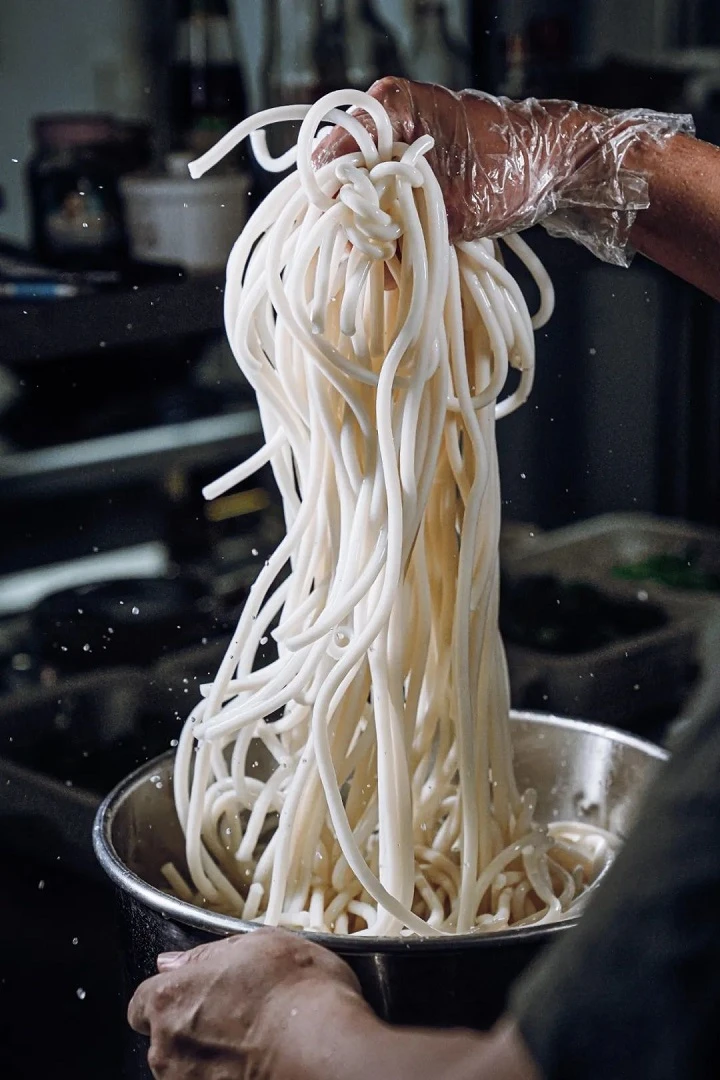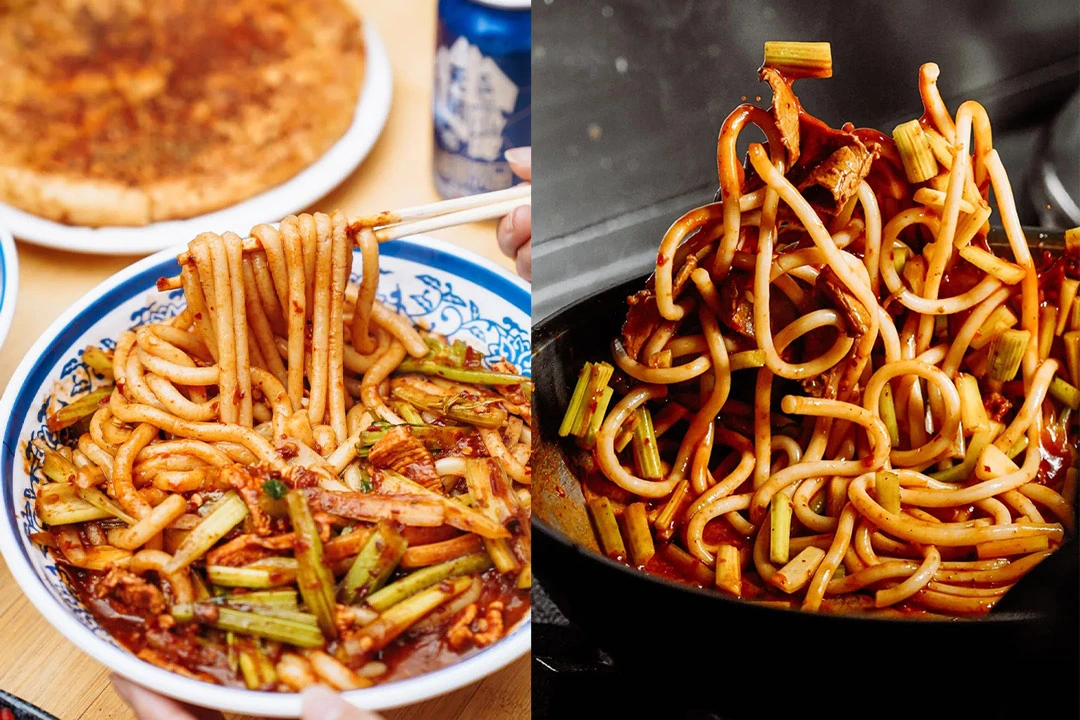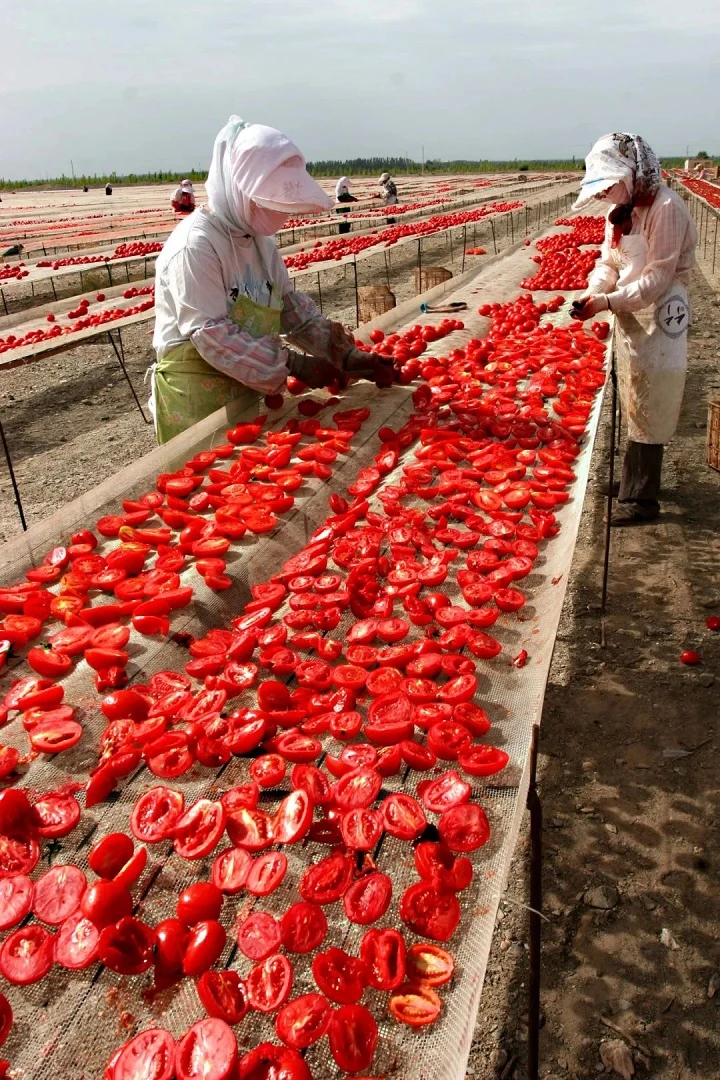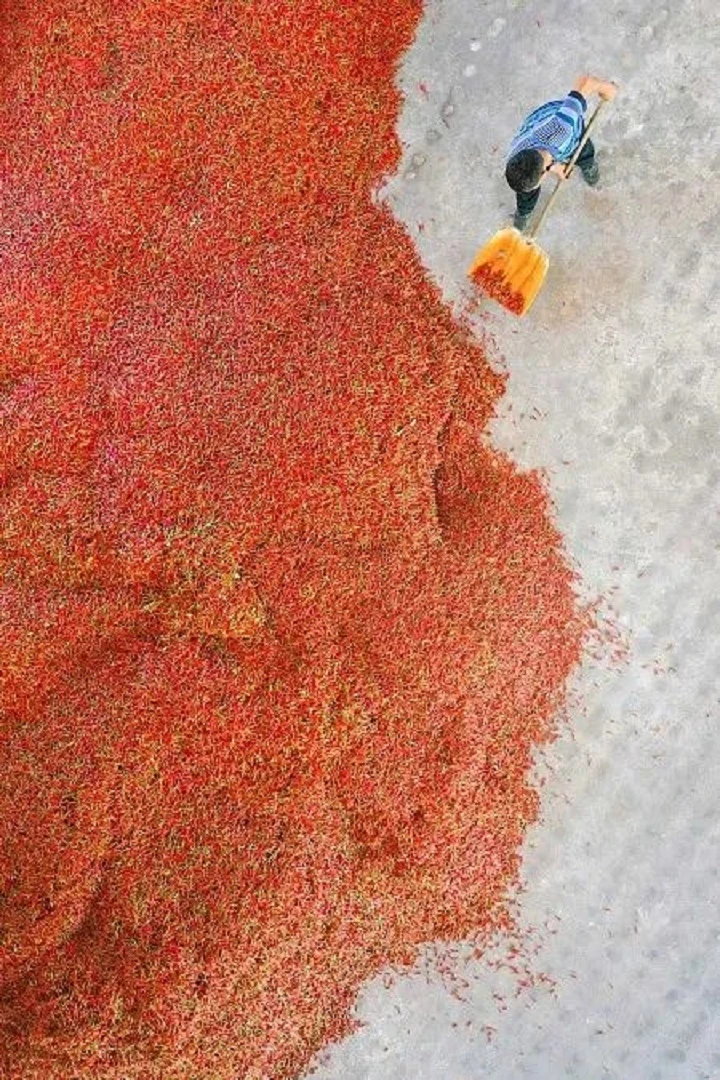Among the various regional delicacies in China, Xinjiang rice noodles stand out as the most intense and fiercely spicy, without a doubt. While rice noodles from other provinces may reach a high level of spiciness known as "mala" (numbing and spicy), Xinjiang takes it to another level with options ranging from mild to explosively spicy. This fiery reputation has led to tales of brave entrepreneurs attempting to introduce Xinjiang rice noodles in Sichuan, only to retreat due to the overwhelming heat.
The allure of these noodles lies in their irresistible spiciness, which has a particularly strong appeal among women in Xinjiang. There is even a local saying that the most beautiful girls in Xinjiang can often be found in rice noodle shops, and every Xinjiang girl has consumed at least half a ton of these noodles. This addictive nature has catapulted Xinjiang rice noodles to fame, making them more popular than traditional dishes like lamb skewers, large plate chicken, and even roasted Nang.

The Experience of Xinjiang Rice Noodles
The real depth of Xinjiang rice noodles' intensity is not just about the heat; it's about the entire experience. From the moment you step into a Xinjiang rice noodle shop, you embark on a spicy journey. Patrons, regardless of the season, resemble athletes who have just run a marathon—faces flushed, sweating profusely, with chopsticks in one hand and a tissue in the other, ready to wipe away sweat and tears.
First-time visitors are often advised against choosing the explosive spicy option unless absolutely necessary. However, those who overestimate their tolerance soon learn the true meaning of Xinjiang spice. As the plate of bright red noodles arrives, you might recall a famous song from the icy mountains of Xinjiang, pondering why these noodles are so intensely red.
One bite in, and the answer becomes clear: Xinjiang rice noodles are extremely spicy yet incredibly flavorful, making it impossible to stop eating despite the pain. The heat can bring tears to your eyes, but the complex layers of flavor keep you coming back for more. The blend of tangy tomato sauce, rich bean paste, and generous portions of chicken or beef, often complemented by refreshing celery or pickles, creates a dish that is both fiery and satisfying.
The Origins and Evolution of Xinjiang Rice Noodles
The story of Xinjiang rice noodles' spiciness is rooted in the region's unique culinary history. Unlike other dishes in Xinjiang, such as lamb skewers and hand-pulled noodles, which are not typically spicy, the rice noodles owe their heat to the influx of migrants from Sichuan and Guizhou in the 1980s. These migrants brought their love for spicy food with them, introducing chili peppers and spicy cooking techniques to the region.
One pivotal figure in this culinary transformation was Wen Zhongfu, a Guizhou native who, in 1982, introduced rice noodles to Xinjiang. Combining the method of making soup noodles with stir-frying techniques, he created the prototype of what we now know as Xinjiang stir-fried rice noodles. The use of various chili peppers, such as dried horn peppers for color, dried line peppers for fragrance, and the notoriously spicy "Facing Heaven" peppers, elevated the dish's spiciness to unprecedented levels.
The inclusion of pickled cabbage, brought by Guizhou migrants, further enhanced the flavor profile of Xinjiang rice noodles. The pickles' crunchy texture and slight acidity added depth to the heat, making the dish more palatable and complex. This fusion of flavors proved to be a hit, leading to the opening of the first dedicated Xinjiang rice noodle restaurant, "Southern Rice Noodle House," in Urumqi in 1986.
A Symbol of Culinary Fusion
Xinjiang rice noodles are more than just a dish; they represent a fusion of cultures and culinary traditions. While the appearance and taste of Xinjiang rice noodles may differ significantly from Guizhou rice noodles, the underlying influence is undeniable. The transformation from soup noodles to stir-fried noodles, the combination of local ingredients with migrant influences, and the incorporation of various cooking styles all reflect a broader narrative of cultural integration.
This blend of traditions is evident in the use of thick, chewy rice noodles made from a mixture of indica rice and starch, resembling Xinjiang's hand-pulled noodles. The primary ingredients—chicken, beef, celery, and cabbage—mirror the components of traditional Xinjiang dishes, while the cooking techniques and spices harken back to Guizhou's fiery cuisine.
Moreover, Xinjiang's rich agricultural landscape contributes to the dish's unique flavor. The region's abundant chili pepper production, accounting for one-fifth of China's dried chili output, ensures a steady supply of high-quality, intensely spicy peppers. Similarly, Xinjiang's tomatoes, known for their sweetness and acidity, add a refreshing contrast to the heat, making the dish even more tantalizing.
In essence, Xinjiang rice noodles embody the spirit of culinary innovation and cultural exchange. They are a testament to the resilience and creativity of those who migrated to Xinjiang, bringing their culinary heritage with them and adapting it to their new environment.



